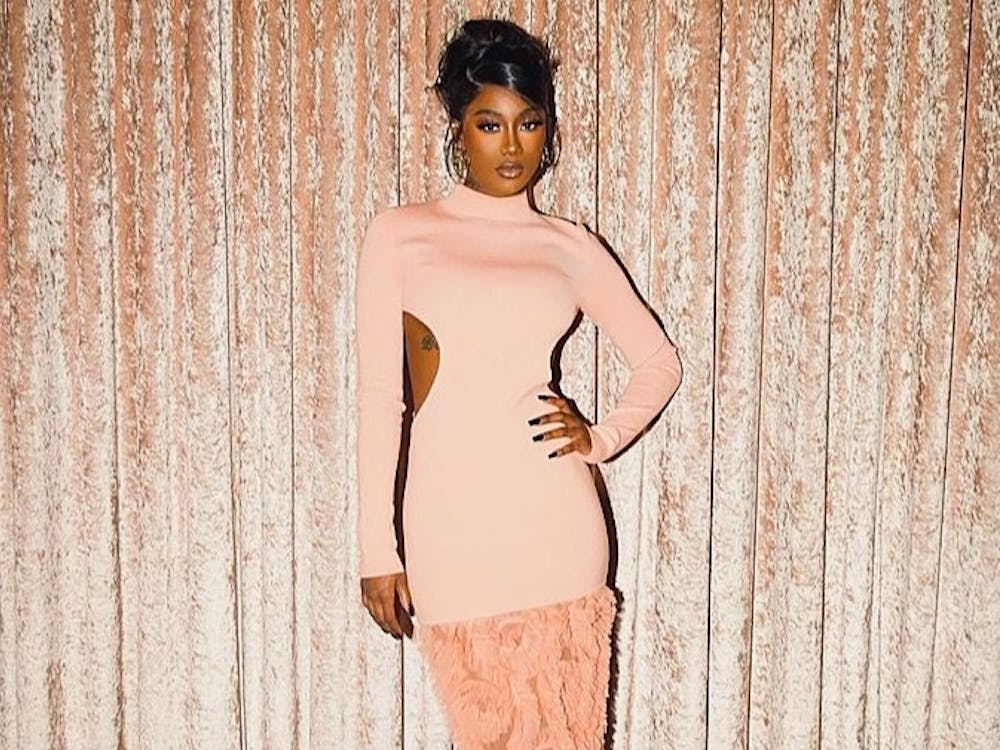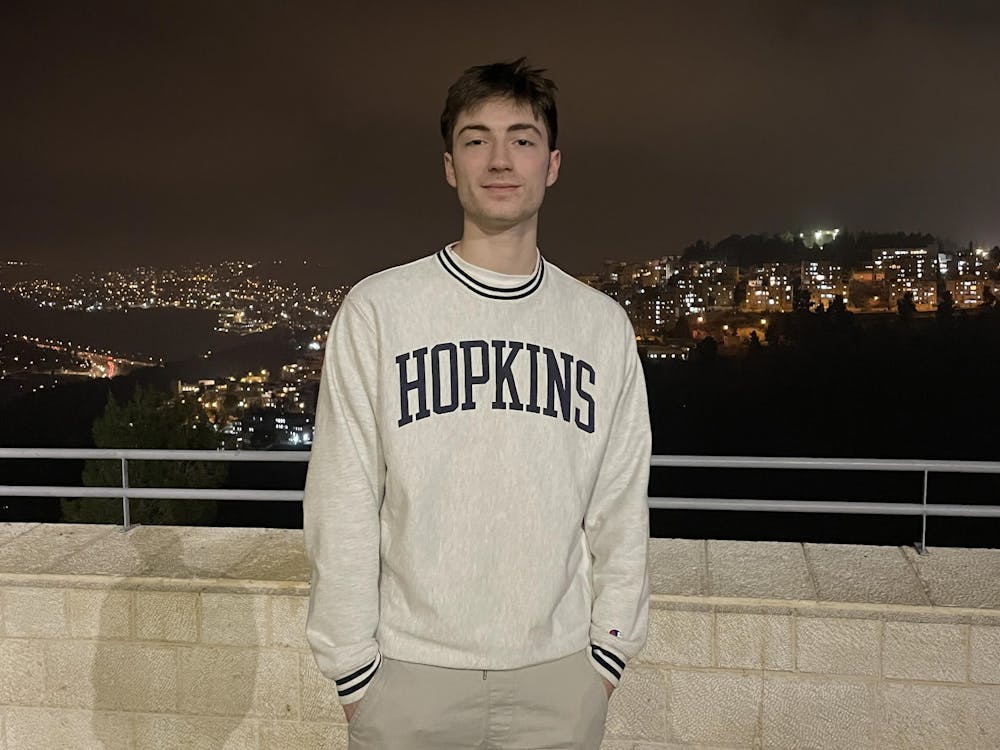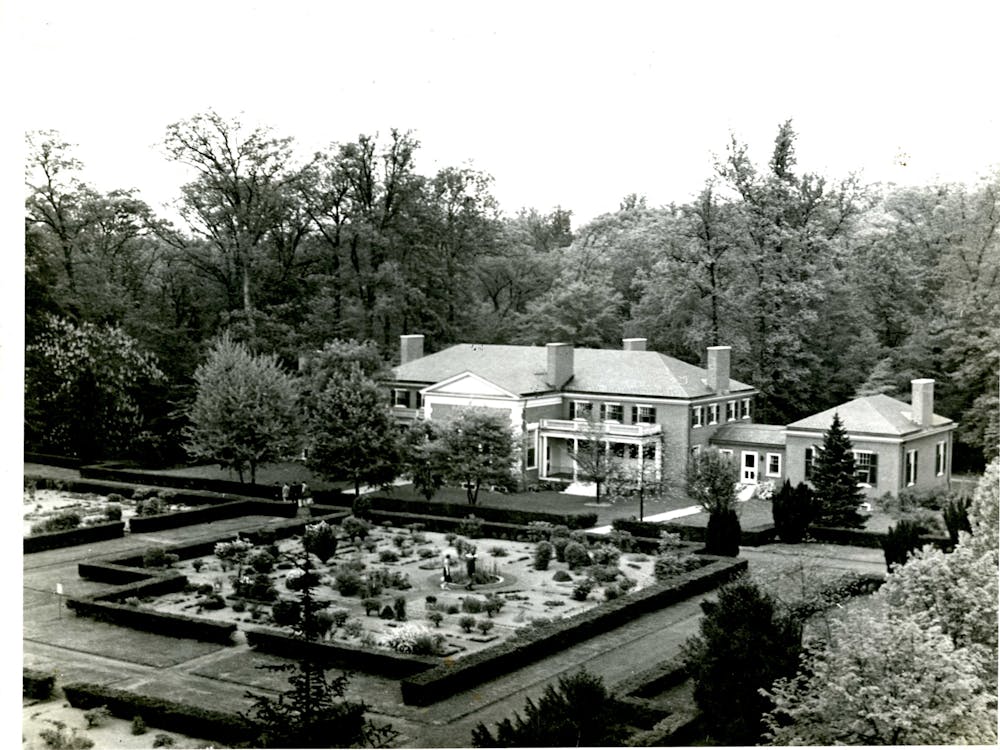Hopkins students called for justice for Freddie Gray at a student-led protest on Wednesday afternoon.
The group gathered in front of the Beach and walked down N. Charles Street to Penn Station, where they joined other college and high school students from across the city.
The Homewood protest was organized by the Black Student Union (BSU) and Hopkins Feminists.
Protesters held up posters that said “Hopkins Cares” and “Am I Next?” and chanting, “All night, all day, we will fight for Freddie Gray.” Many of the students wore shirts that said “Black Lives Matter,” and many others wore black clothing.
Students marched from the Beach to Gilman Hall and protested on the front steps before looping back to N. Charles Street to proceed to Penn Station, then City Hall.
They joined students from Goucher College, Towson University and other local schools to protest downtown.
Despite initial concerns over the protesters’ safety, the organizers — Tierra Langley, Marlene Kanmogne, Enya Baez-Ferreras and Hilario Dominguez — continued with the protest, which was accompanied by police escorts.
According to Langley, the purpose of the protest was to take a stand for Baltimore and all those affected by police brutality, legal sanctions and the marginalization of minority communities.
“We understand not just because we are made up a lot of minority groups, but because a lot of us come from communities that have been overly policed, stigmatized, and stereotyped,” Langley said.
“We understand what it's like to live under the thumb of the government, and I think we’re ready for a change. This is our moment.”
This is the third protest that the BSU held this year, according to Langley, who works at the Office of Multicultural Affairs. Earlier in the year, protests were held for Michael Brown and Eric Garner. However Langley noted the protest for Freddie Gray was not as challenging to arrange as the other two demonstrations.
“It wasn’t as difficult to get people to listen to the fact that there was going to be another protest,” Langley said. “They already knew what to expect. We’ve been protesting about what’s happening elsewhere, but this is one of the most critical moments in Baltimore. This time, it’s in our own backyard.”
“There were thousands of people in the city,” freshman Colette Uche said. “Everyone was in unison. Everything was perfect, and to see the city and people coming out to support us, cheer us on and join us in our chants was really overwhelming. We kept saying we were really proud of the city.”
Junior Grace Osagie, one of the protesters in attendance, said it was important to bring attention to Freddie Gray’s death instead of the violence.
“It’s important to bring light back to him and why the protest happened in the first place,” Osagie said. “I want people to know what happened to Freddie Gray, why he died and to bring justice to the issue.”
Several faculty members came out to support the students in their protest.
“I’m here in support of publicizing and giving more attention to the reason for all these protests,” sociology senior lecturer Tim Nelson said. “To bring attention to all the reform and justice that needs to happen regarding the police brutality in particular and equal opportunity for African Americans in Baltimore and the country as a whole.”
Several students had also taken part in other protests throughout the city. On Monday, Dominguez was in Hampden, peacefully protesting until police broke out. He was tear gassed and shot with rubber bullets. On Tuesday, he was at 10th and North Streets, where he was maced by police.
Dominguez said he was constantly harassed by police growing up in Chicago. Walking in his neighborhood while wearing a hat often led police to stop and question him.
“When you grow up like that, you don’t really know that this only happens in your community, that you’re in a community where this is more prevalent,” he said. “When you realize that, you get passionate because you want it to change. It’s not fair.”
In Baltimore, within the first two weeks of his freshman year, Dominguez was stopped by police while smoking a cigarette with his friend by one of the bike racks near Wolman.
“About three squad cars showed up,” Dominguez said. “Later on, when I asked why we were approached in such a manner, the Hop Cops had the audacity to tell us it was because we were stealing bikes, and we looked suspicious. I asked why we looked suspicious, and they couldn’t seem to answer. When I asked them why they didn’t approach another gentleman on the opposite bike racks, who was white, they said it was because there were two of us.”
Other experienced protesters included senior Baez-Ferreras who was in the city on Saturday peacefully marching from West Baltimore to City Hall. For Baez-Ferreras, the experience was positive since she was able to witness many groups such as Nation of Islam, Bloods and Crips working together to stop the violence incited by bystanders.
“As a black student here, I’m not out in Baltimore, but I’ve felt, even if it’s just a fraction of the disparity that some of the Baltimore residents are feeling, enough,” Baez-Ferreras said. “I just imagine being constantly scared of your kids going out, and I can’t find myself personally condemning the riots. It’s not my place to judge, and I hope people can be a little more sympathetic and think about what leads others to show their anger in that way. What would drive someone to that point? If you could answer that question and still say people participating in these riots are animals, then I think you need to look back again and again.”
While Baez-Ferreras cannot find herself condemning the riots, she said she does not endorse violence, but would like people to realize that violence is only one aspect of the bigger problem.
“Property can be replaced, but people killed by violence can’t be brought back,” Baez-Ferreras said. “We need to stop caring so much about CVS being destroyed. Those things are bad, and they should not happen, but what shouldn’t happen before all those things is an innocent life being taken by police brutality.”
Both currently and in past decades, Hopkins has been described as poorly integrated within the rest of the city. Baez-Ferreras said this is because Hopkins is still seen as part of Baltimore only in name but not in engagement.
“We refer to the Hopkins bubble all the time, and it’s very real,” Baez-Ferreras said. “We are a part of this city whether we come here for four years, two years, whatever. Baltimore is hurting, and to sit up here in Charles Village making Snapchats about riot playlists is insensitive. It shows you live and go to school in a city and you take resources and advantage of this city for your education and in return don’t give anything back.”






















Please note All comments are eligible for publication in The News-Letter.